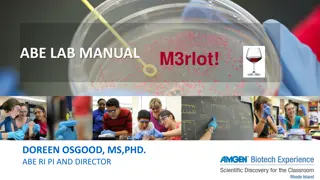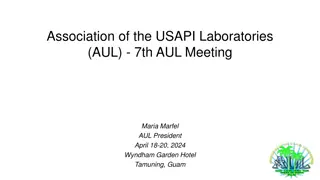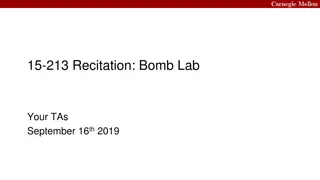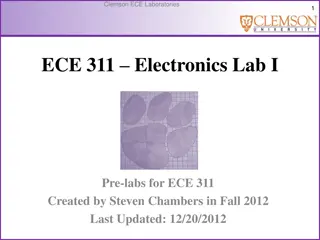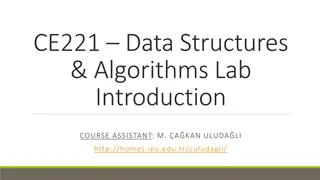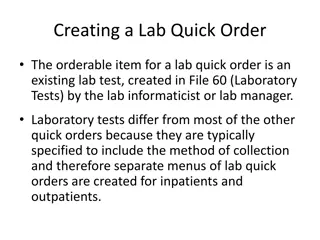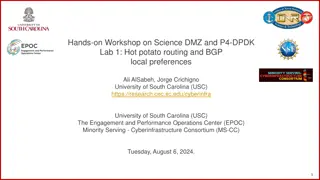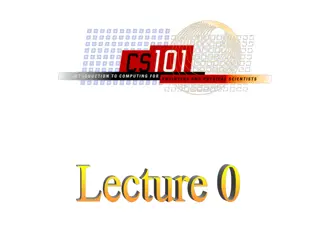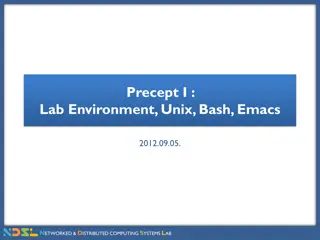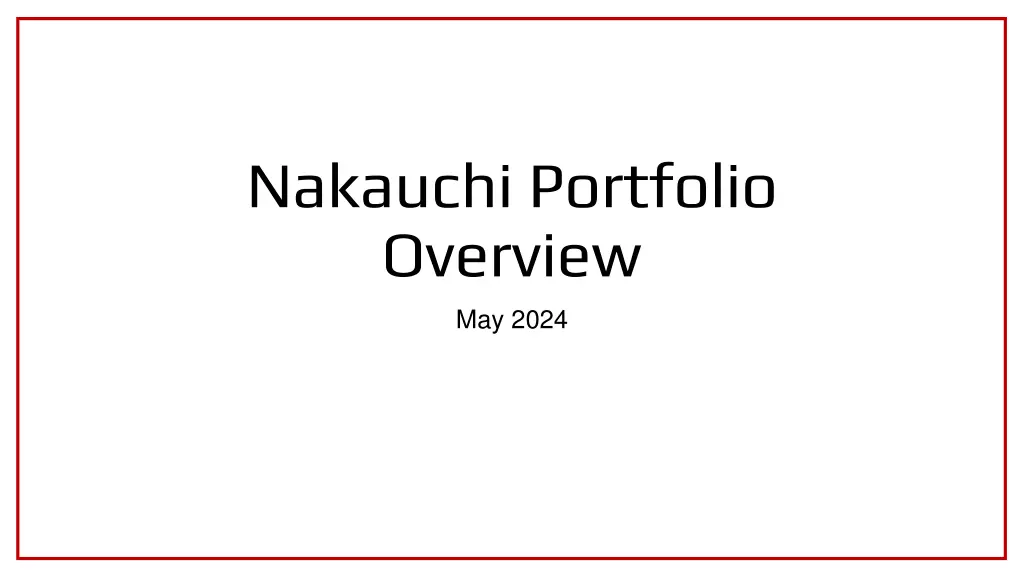
Nakauchi Lab's Advanced Stem Cell Research and Therapies
Explore Nakauchi Lab's cutting-edge focus on stem cell research for medical applications, including stem cells for therapy and organ generation. Discover their innovative techniques and cell/gene therapies aimed at revolutionizing the field of regenerative medicine.
Download Presentation

Please find below an Image/Link to download the presentation.
The content on the website is provided AS IS for your information and personal use only. It may not be sold, licensed, or shared on other websites without obtaining consent from the author. If you encounter any issues during the download, it is possible that the publisher has removed the file from their server.
You are allowed to download the files provided on this website for personal or commercial use, subject to the condition that they are used lawfully. All files are the property of their respective owners.
The content on the website is provided AS IS for your information and personal use only. It may not be sold, licensed, or shared on other websites without obtaining consent from the author.
E N D
Presentation Transcript
Nakauchi Portfolio Overview May 2024
Nakauchi Lab Lab focuses on stem cell research for medical applications: Stem cells for cell therapy Stems cells for organ generation Stem cell research tools Organ generation is a major focus: pie-in-the sky goal is to inject patient cells into animal embryo, grow organ in an animal, then transplant into a patient
Nakauchi Portfolio Cell/gene Therapies and Techniques Organ Generation Techniques Cell based Research Techniques S17-450 S18-082 S22-462 S23-417 S20-041 S23-500 S24-007 S18-239 S22-313 S22-435 S23-388 S24-082
Cell/Gene Therapies and Techniques 1. S17-450: Common Neoantigens in EGFR and RAS Mutations Generate Generalized Cytotoxic T Lymphocytes for Adoptive T-cell Therapies 2. S18-082: Use of Polyvinyl Alcohol for Chimeric Antigen Receptor T-Cell Expansion (Exp Hematol paper) 3. S22-462: Secreted Particle Information Transfer (SPIT)- A Cell Based in vivo Engineering Platform (bioRxiv paper) 4. S23-417: Lusutrombopag is Used for Stable and Reproducible Human ex vivo Hematopoietic Stem/Progenitor Cell Expansion
Cell/Gene Therapies and Techniques S17-450: Common Neoantigens in EGFR and RAS Mutations Generate Generalized Cytotoxic T Lymphocytes for Adoptive T- cell Therapies Isolate cytotoxic T cells with EGFR or KRAS neoantigen epitope; Generate iPSCs from CTLs, then differentiate into CTLs specific for EGFR or KRAS mutations; Use differentiated CTLs as cell therapy
Cell/Gene Therapies and Techniques S18-082: Use of Polyvinyl Alcohol for Chimeric Antigen Receptor T-Cell Expansion PVA-based media for culturing HSCs and immune cells May be useful for expansion of T-cells for T-cell therapies, or clinical bone marrow transplantation
Cell/Gene Therapies and Techniques S22-462: Secreted Particle Information Transfer (SPIT)- A Cell Based in vivo Engineering Platform (bioRxiv paper) Platform for cells to genetically modify other cells; Human cells act as delivery vectors for in vivo genetic engineering; VLPs produced in original cells to deliver genetic engineering enzymes
Cell/Gene Therapies and Techniques S23-417: Lusutrombopag is Used for Stable and Reproducible Human ex vivo Hematopoietic Stem/Progenitor Cell Expansion HSPC culture medium with lustrombopag; Used to produce different cell types (macrophages, dendritic cells, etc.)
Organ Generation Techniques 1. S20-041: Igf1r Knockout to Increase Donor Cell Contribution in Interspecies Organ Generation (Cell Stem Cell paper) 2. S23-500: Affordable Damage-free Storage, Manipulation, and Shipment Method for Cells, Embryos, and Organs 3. S24-007: Integrated Techniques for Overcoming Embryonic Barriers to Efficiently Generate Universal Off-the Shelf Organs and Fertility Improvement
Organ Generation Techniques S20-041: Igf1r Knockout to Increase Donor Cell Contribution in Interspecies Organ Generation (Cell Stem Cell paper) Chimeric animals generated by injecting pluripotent stem cells into blastocyst stage embryos; Knockout of Igf1r in host embryo increases donor cell contribution to host organs; Increases possibility of human organ generation in an animal
Organ Generation Techniques S23-500: Affordable Damage-free Storage, Manipulation, and Shipment Method for Cells, Embryos, and Organs Method of preserving cells, embryos and organs Pausing of organs also requires H2S
Organ Generation Techniques S24-007: Integrated Techniques for Overcoming Embryonic Barriers to Efficiently Generate Universal Off-the Shelf Organs and Fertility Improvement Discovered novel embryonic barrier restricting the contribution of injected hypoimmunogenic pluripotent stem cells for generating cells/organs using blastocyst complementation Engineered host embryo to allow efficient contribution from injected hypoimmugenic PSCs May have implications in treatment of fertility
Cell-based Research Techniques 1. S18-239: Methods for Evaluating Health and Stability of Cultured Cells 2. S22-313: Blastocyst Microglia Complementation for in vivo Microglia Manipulation and Validation of Gene Function 3. S22-435: Prevention of Unintended CRISPR/AAV-mediated Concatemeric Knockins (Nature Biotechnology paper) 4. S23-388: New Method of Maintaining/Sustaining Mammalian Embryonic Stem Cell Pluripotency in Culture 5. S24-082: Cost-Effective and User-Friendly Viral Vector Production Methodology
Cell-based Research Techniques S18-239: Methods for Evaluating Health and Stability of Cultured Cells Method of detecting aneuploidy in cells by digital PCR; Method of detecting mycoplasma/bacterial infections in cells by digital PCR; Method of authenticating cells lines by digital PCR; PCR primers and probes developed
Cell-based Research Techniques S22-313: Blastocyst Microglia Complementation for in vivo Microglia Manipulation and Validation of Gene Function Method for generating chimeric mouse; Knockout of CSF1R from mouse embryo, then introduce stem cells with desired mutation
Cell-based Research Techniques S22-435: Prevention of Unintended CRISPR/AAV-mediated Concatemeric Knockins Method for detecting hidden concatemeric knockins by digital PCR; Methods for preventing concatemeric knockins
Cell-based Research Techniques S23-388: New Method of Maintaining/Sustaining Mammalian Embryonic Stem Cell Pluripotency in Culture Chemically defined basal medium to maintain mammalian PSCs in undifferentiated state; Can maintain both human and mouse developmentally competent PSCs in single media No hormones, growth factors, cytokines Resistant to boiling, allowing for greater ease of use Initial indications suggest media can lead to generation of super CHO cells
Cell-based Research Techniques S24-082: Cost-Effective and User-Friendly Viral Vector Production Methodology Viral vector production medium; Comprised of commercially available products but in different ratios than other media; Significantly fewer amount of DNA needed for viral vector production; Critical for transducing sensitive cells like HSCs



